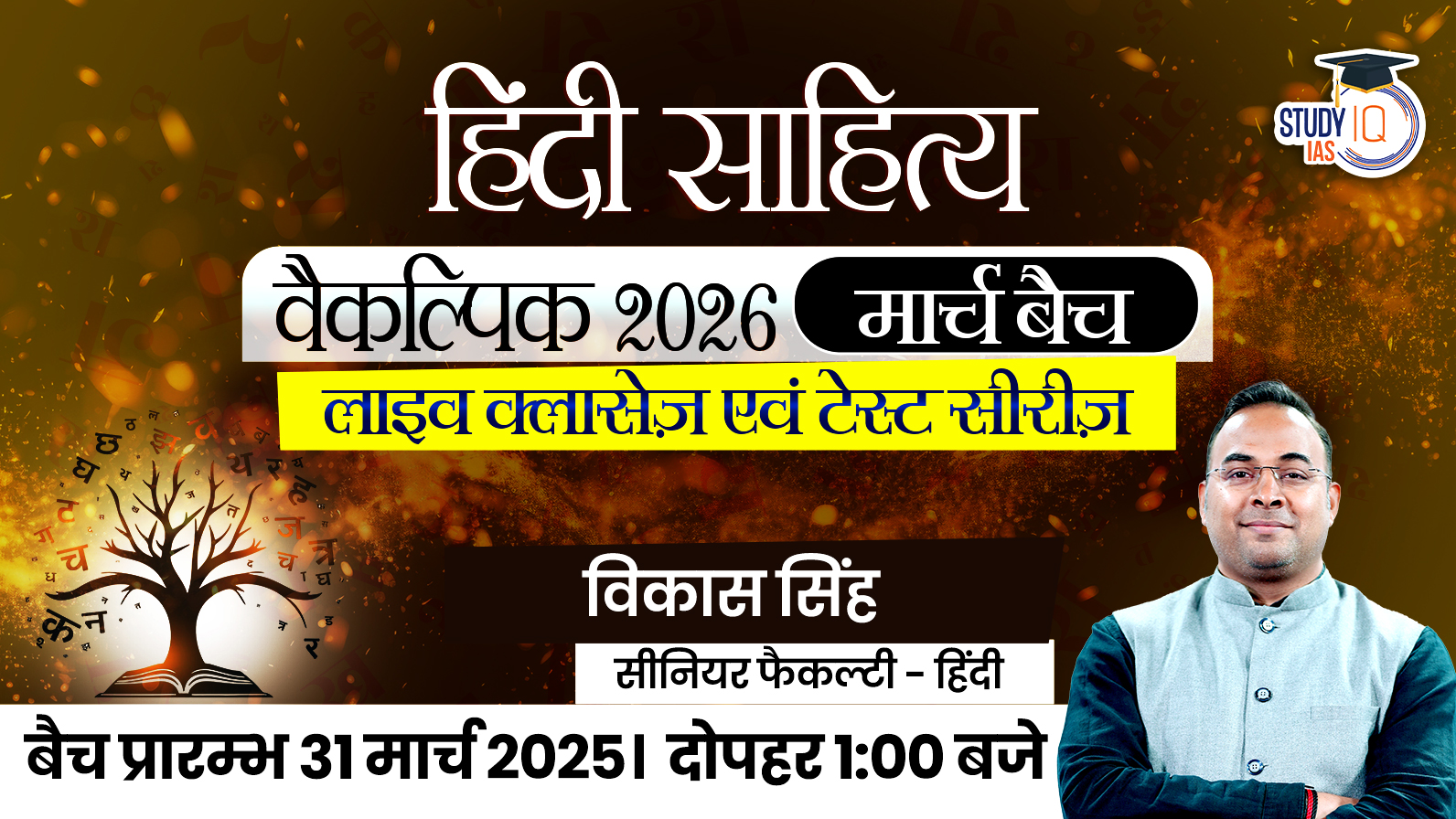Daily Current Affairs for UPSC 2023
Q) Recently seen in news, the term ‘Greedflation’ is best related to which one of the following?
- When prices increase more than 50 percent in a month
- A situation where government’s expenditure exceeds revenue
- Extremely rapid increase in prices causing collapse of currency
- When companies deliberately increase prices during inflation
Daily Current Affairs for UPSC – 27 June April 2023
Explanation:
- Option (4) is correct: There is a growing consensus across the world that corporate greed is a significant factor behind the current global inflationary pressures. Greedflation refers to a situation where corporate greed plays a significant role in fueling inflation in the economy. It occurs when companies take advantage of the inflationary environment by increasing prices beyond what is necessary to cover their increased costs. This excessive price increase leads to higher profit margins for the companies, which in turn further contributes to inflation. The concept of greedflation suggests that instead of the traditional wage-price spiral, where rising wages lead to higher prices, it is the profit-price spiral that drives the inflation.
Q) Consider the following statements about Indian Ocean Dipole (IOD):
- It refers to the fluctuation of atmospheric pressure patterns between the eastern and western Indian Oceans.
- A positive IOD year helps bring more than normal rainfall to central India.
- The occurrence of tropical cyclones increases in the Arabian Sea during a negative IOD.
How many of the statements given above is/are correct?
- Only one
- Only two
- All three
- None
Explanation:
- Statement 1 is correct: The Indian Ocean Dipole (IOD) is an ocean-atmosphere phenomenon that occurs in the Indian Ocean. It is characterized by the fluctuation of sea surface temperatures and atmospheric pressure patterns between the eastern (Bay of Bengal) and the western Indian Ocean (Arabian Sea). The IOD can significantly impact weather patterns and climate in the surrounding regions, including parts of Africa, Southeast Asia, and Australia. According to the India Meteorological Department (IMD), there is an 80% chance of a positive Indian Ocean Dipole (IOD) event in the upcoming months, which could potentially counterbalance the effects of the ongoing El Niño.
- Statement 2 is correct but statement 3 is incorrect: Studies have shown that a positive IOD year sees more than normal rainfall over central India. It was demonstrated that a positive IOD index often negated the effect of El Niño, resulting in increased Monsoon rains. A negative IOD, on the other hand, complements El Niño leading to severe droughts. At the same time, positive IOD results in more cyclones than usual in Arabian Sea. Negative IOD results in stronger than usual cyclogenesis (Formation of Tropical Cyclones) in the Bay of Bengal. Cyclogenesis in Arabian Sea is suppressed during this time.
Q) With reference to Autonomous District Councils (ADCs), consider the following statements:
- ADCs are established in the ‘Fifth Schedule’ of the Indian Constitution.
- ADCs can also grant licenses for the extraction of minerals within their jurisdiction.
- The Councils have the authority to prescribe the language to be used in the primary schools.
How many of the statements given above is/are correct?
- Only one
- Only two
- All three
- None
Explanation:
- Statement 1 is incorrect: The Sixth Schedule under Article 244 provides for the formation of autonomous administrative divisions; Autonomous District Councils (ADCs) that have some legislative, judicial, and administrative autonomy within a state. The acts of Parliament or the state legislature do not apply to autonomous districts or apply with specified modifications and exceptions. The Sixth Schedule applies to the Northeastern states of Assam, Meghalaya, Mizoram (three Councils each), and Tripura (one Council). Each Autonomous District shall have a District Council consisting of not more than 30 members, out of which 4 are nominated by the Governor while the rest are elected based onadult franchise.
- Statement 2 and 3 are correct: The District Councils are given the power to establish, construct or manage primary schools, dispensaries, markets, cattle ponds, fisheries, roads, road transport and waterways in the districts. The Councils are also authorized to prescribe the language and manner of instruction in the primary schools.The District Councils are also empowered to constitute Village and District Council Courts for trial of suits and cases where all parties to the dispute belong to Scheduled Tribes within the district. And no other courts except the High Courts and the Supreme Court have the jurisdiction over such suits or cases of the Council Courts. However, these Council Courts are not given the power to decide cases involving offences punishable by death or imprisonment for five or more years. ADCs are empowered to:
- Assess and collect land revenue.
- Impose taxes on professions, trades, animals, vehicles,
- Impose taxes on entry of goods into the market for sale,
- Impose toll on passengers and goods carried in ferries,
- Impose taxes for the maintenance of schools, dispensaries or roads within their respective jurisdiction.
- Grant licenses or leases for extraction of minerals within their jurisdiction.
Q) Consider the following pairs:
| GI tags | Associated states | |
| 1. | Amroha Dholak | Bihar |
| 2. | Kalpi Handmade Paper | Madhya Pradesh |
| 3. | Sambhal Horn Craft | Rajasthan |
How many of the following pair is/are correctly matched?
- Only one pair
- Only two pairs
- All three pairs
- None
Explanation:
- Pair 1 is incorrectly matched: The Amroha Dholak is a musical instrument made of natural wood in the state of Uttar Pradesh. Mango, jackfruit and teakwood is preferred for making the dholak. Wood from mango and sheesham trees are used to carve the multiple sized and shaped hollow blocks, which are later, fitted with animal skin, mostly goatskin, to create the instrument.
- Pair 2 is incorrectly matched: Kalpi Handmade Paper is manufactufred in Kalpi, a small town located between Kanpur and Jhansi, Uttar Pradesh. The craft of making handmade paper from wastepaper and cloth strings is prominent in Kalpi. This paper in used to make a variety of products such as office files, carry bags, absorption papers, visiting cards and more.
- Pair 3 is incorrectly matched: Sambhal Horn Craft are handicraft products made in Sambhal, Uttar Pradesh. The raw material used for making these craft items is procured from dead animals that makes this industry environment friendly. Sambhal offers a wide range of decorative horn-bone handicrafts that are available indifferent attractive looks, designs and patterns.
Q) With reference to Current Account Deficit (CAD), consider the following statements:
- Recently, India’s CAD has increased to 2 percent of its Gross Domestic Product.
- A lower CAD helps improve investor confidence in domestic currency.
Which of the statements given above is/are correct?
- 1 only
- 2 only
- Both 1 and 2
- Neither 1 nor 2
Explanation:
- Statement 1 is incorrect: Data by RBI shows that India’s current account deficit (CAD) has decreased to $1.3 billion (0.2% of GDP) in the fourth quarter of FY23, from $16.8 billion (2%of GDP) in the preceding three-month period. The current account measures the flow of goods, services and investments into and out of the country. The current account includes net income, including interest and dividends, and transfers, like foreign aid. When the value of the goods and services that a country imports exceeds the value of the products it exports, it is called the current account deficit.
- Statement 2 is correct: A lower CAD can improve investor confidence and make the country’s currency more appealing to investors. A surplus in the current account can increase foreign exchange reserves and the value of the local currency. When a country’s imports exceed its exports, it results in a net outflow of money, which can lead to a decrease in demand for the country’s currency. This decrease in demand for the currency can cause its value to weaken or depreciate. A weaker currency can make imports more expensive, leading to higher inflation and a reduction in the purchasing power of the country’s citizens. A current account deficit can also lead to debt accumulation. If a country is unable to finance its current account deficit with foreign investment, it may need to borrow to cover the gap which can lead to an increase in debt levels, which can further harm the economy.


 Heat Waves, Causes and India's Heat Acti...
Heat Waves, Causes and India's Heat Acti...
 In-House Removal Process for High Court ...
In-House Removal Process for High Court ...
 Tuberculosis (TB), Symptoms, Causes and ...
Tuberculosis (TB), Symptoms, Causes and ...





















